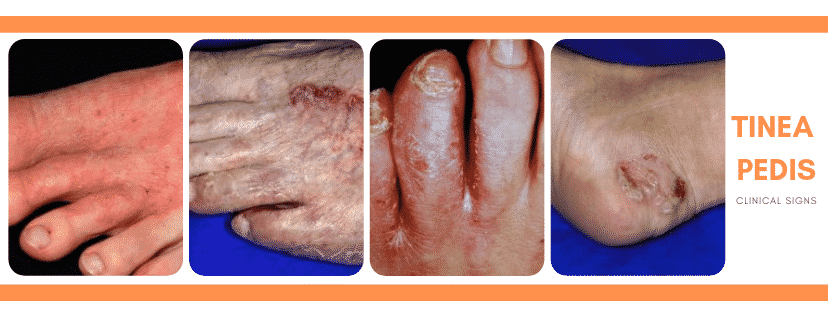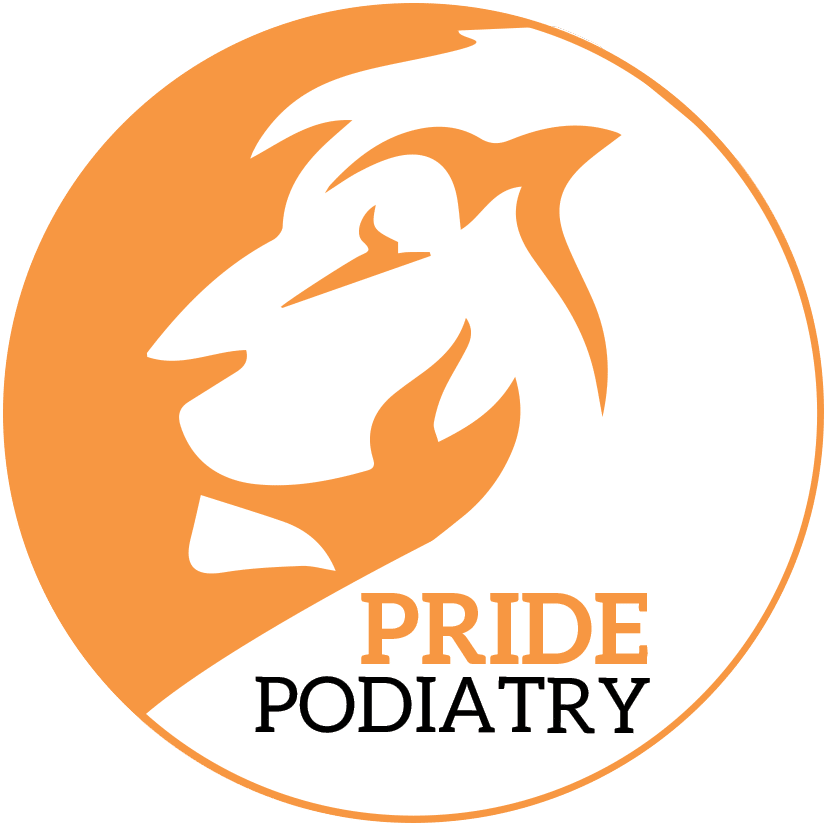Tinea pedis treatment guidelines have changed over the last 5 years. Where we used to recommend a variety of medicaments we’re now much more laser focussed on what gets results.
In this article our podiatrists will take you through the the best tinea pedis treatment guidelines. We look at the evidence from peer reviewed research and combine with years of clinical practice.
We’ve written extensively about tinea pedis (also known as athlete’s foot) previously. If you’re in need of a recap of what causes tinea check that post out.
Tinea Pedis Treatment Guidelines
Step 1: Treat the fungus
Use a film forming solution version of terbinafine like Lamisil Once.
Step 2: Improve your natural tinea defence
Ensure your skin is not too dry, not too moist and wash with a soap free wash.
Step 3: Disinfect other tinea reservoirs
Use sunlight and antifungal washing additives to treat clothes and shoes.
See below for detailed explanations.
Honesty Disclaimer & Conflicts
It’s worth noting, this is general advice.
When we look at what works or has worked for most people. That does not necessarily mean it will work the best for your tinea pedis.
It might also mean that the following medicines are unable to be applied due to allergy or irritation.
It’s best practice to see your local podiatrist first to get a diagnosis and a true plan for your own personal tinea pedis treatment guidelines to follow.
Our conflicts to declare here are that we are podiatrists. We’re paid by our customers who come in and visit us in clinic or via telehealth online podiatry. We receive no funding from any of the companies listed here and have no financial interest in these products.

Tinea Pedis Treatment Guidelines
The following guidelines are for someone who has a confirmed case of tinea pedis. That is a fungal colonisation or fungal infection of the foot or feet.
Step 1: Treat the fungus
The most effective topical medicine we have to treat tinea pedis is known as terbinafine. Terbinafine does come in a tablet which will not be part of these guidelines as this is a prescription medicine in Australia. We will discuss terbinafine in it’s topical forms.
Terbinafine in a film-forming-solution is available as an over the counter product known as Lamisil Once. When used correctly this treatment is the most effective tinea treatment as it combines the terbinafine medicine in a novel medium.
The film forming solution slowly releases the terbinafine over time. This means that instead of you having to apply a cream multiple times per day, you only need to apply it once.
The thing to remember is that this film needs to soak deep into the skin. You can’t apply Lamisil Once withing 24 hours of showering or bathing as you wash all the medicine away.
For mild cases of tinea pedis a single application is ideal will likely get results. For more severe or chronic cases re-application fortnightly may be required for up to 3 months.
Step 2: Improve your natural tinea defence
Tinea thrives in the extremes. In moist or dry skin as well as warm, dark, enclosed places.
If your skin is too moist either due to sweaty feet from sports or hyperhidrosis, or poor drying post showering then this needs to be addressed.
Strategies including using moisture wicking socks, changing socks and shoes regularly, and using some aids to get down to dry between your toes thoroughly should be considered.
The careful addition of an astringent like methylated spirits to dry the skin out further could also be considered. This needs to be carefully administed as skin that is too dry will also provide a haven for tinea pedis to spread.
On the other hand, sorry, foot. If your skin is too dry then improving it’s integrity with a regular moisturiser routine will help. Your moisturiser must contain some natural acids in it. Things like urea, lactic acid, stearic acid etc. These acids compliment the natural acids usually produced by our sweat.
This is important as the tinea pathogens are not as effective in spreading in acidic environments.
An extension of this is to replace your soap with a soap free wash. Soap is alkaline and when used raises the pH level of the skin in the short term. This is the environment that tinea loves.
By moving to a soap free wash which is pH balanced to the skin you’ll avoid these periods of times where the tinea spreads fast after each wash.
Examples of soap free washes that we like are QV wash, Alphakeri wash and Cetaphil wash.
We’ve written about caring for our skin and using soap free washes on our post on dry skin, cracked heels.
Step 3: Disinfect other tinea reservoirs
The tinea pathogens love us. They live on our skin comfortably. Less so on our clothes or in our shoes, but for recurrent or chronic tinea sufferers these need to be addressed as well.
The gold standard for killing tinea pedis pathogens on your clothes is to add an antifungal to your washing loads. Both Canestan and Dettol make simple washing add on’s that you combine with your normal detergents to kill tinea pathogens.
For shoes the most effective treatment is to open the shoes up, remove the laces and liners and allow them to get a couple of hours of direct sunlight.
Tinea pathogens are like vampires, the direct sun will kill them off no worries.
FAQ About Tinea Pedis
Can tinea pedis be cured?
Yes, quite effectively in almost every case. Following your own personal tinea pedis treatment guidelines and adressing any contributing factors will cure tinea pedis.
Does it matter what species of fungus causes my tinea pedis?
It does not matter what species of fungus for these general guidelines as the medicament reccomended is effective against all the common pathogens.
In the past it was much more common to have skin scraping samples taken to diagnose which dermatophyte infection was the culprit.
How is tinea pedis diagnosed?
A clinical diagnosis by your podiatrist is the most common and effective way to determine if you have tinea pedis or another similiar presentation.
Can tinea pedis effect my nails?
When the fungal pathogens colonise and infect our toenails instead of being called tinea pedis it’s known as onychomycosis.
Same dermatophytes, but living on nail tissue instead of skin.
Treating fungal nails is more involved than treating tinea pedis as our skin is a living organ. Skin has great blood supply and is turned over often. Nails are much slower growing with the part that we see no longer “living” and having a direct blood supply. Oh, and they grow much slower. You might have a single skin cell on your foot for around 30 days whereas a nail cell will be there for well over a year in most cases.
Is tinea pedis contagious?
Yes tinea pedis is contagious and can spread from person to person. Avoiding sharing shoes or socks with someone who has tinea pedis is a good idea.
The dermatophytes can also live for some time in “standing water”. If your shower has poor drainage or if you’re following someone with tinea into the shower who does not wear thongs whilst bathing it’s best to pop your own on.
Which topical antifungal works best?
Topical terbinafine is by far the most effective topical antifungal.
There are different preparations and strengths, each with their own pros and cons.
The film forming solution we use in our tinea pedis treatment guidelines is most effective as it does not need to be reapplied. It’s the inconsistent application of topical antifungal creams, sprays or ointments which reduce their efficacy.
In Summary
If any one of us podiatrists were to pick up a tinea pedis infection we’d be straight onto these. The tinea pedis treatment guidelines here treat the immediate symptoms as well as getting to the root cause.
As discussed up top, and re-iterated here for importance. Tinea pedis treatment guidelines are general in nature. Getting a diagnosis and a considered plan for your personal needs is by far the most effective method in treating your tinea pedis.
Make an appointment with our podiatrists across Melbourne or via online podiatry telehealth sessions to get your personal guidelines now.




